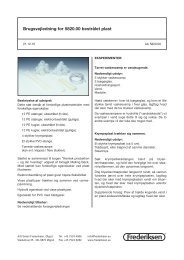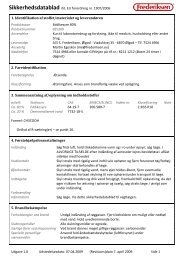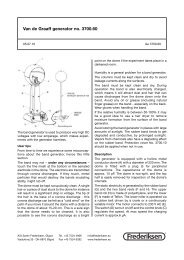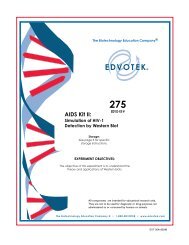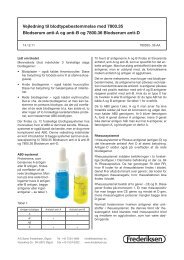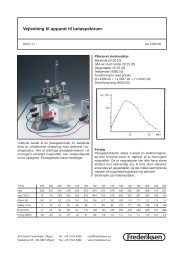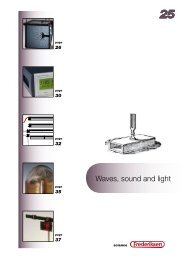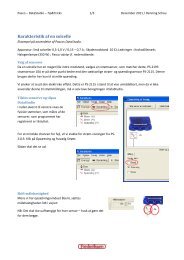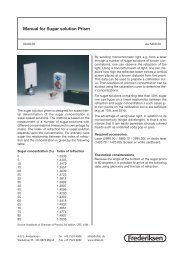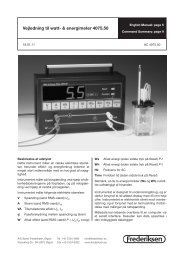255 - Frederiksen
255 - Frederiksen
255 - Frederiksen
- No tags were found...
Create successful ePaper yourself
Turn your PDF publications into a flip-book with our unique Google optimized e-Paper software.
Purification & Size Determination of gfp & bfpEDVO-Kit #<strong>255</strong>Purification & Size Determination of Green & Blue Fluorescent ProteinsBioluminescence from marine microorganisms has been observed by manysummer visitors at various beaches around the world. It always fascinatesthe observer by the repeated parade of both color and light on the sandduring the ebb and flow. This observation takes second place to the lightproduced by the bioluminescent jelly fish, Aquorea victoria. A bright burstingenergy of light is observed when energy is transferred to the green fluorescentprotein (gfp) which is located in a specialized photogenic cell locatedin the base of the jellyfish umbrella. There are several variants to gfp proteinthat have been genetically engineered and which dramatically enhanceclassroom laboratory experiments. An excellent companion to gfp is the bluefluorescent protein (bfp) which is cloned and well characterized.This family of proteins had been known for some time and significant researchin this area had been published. The fluorescent proteins have beencloned and expressed. These proteins do not require substrates, other geneproducts, or cofactors. When exposed to long or short U.V. light, they willemit a bright green or blue light that is clearly visible in bacteria that aretransformed by plasmids that contain genes for the gfp or bfp. Likewise, purificationof gfp or bfp is simplified by their detection based on fluorescence.Background InformationThere are many examples of chimeric proteins that are fusion products usingthe gfp or bfp fluorescent proteins as biological tags. Such fusions are ateither the N- or C- terminal and often result in no loss in the fluorescence orbiological activity of the chimeric protein. These new biotechnology toolshave made it possible to conduct studies that deal with protein localizationand trafficking within cells.The green fluorescent protein (gfp) has 238 amino acid residues and has amolecular weight of approximately 40,000 daltons. It appears that most ofthe intact protein is required for maintaining fluorescence and only smalldeletions of a few amino acids are allowed without compromising the integrityof the protein structure. Interestingly, the chromophore responsible forlight emission is within the primary structure of the protein and resides in atripeptide at positions 65 to 67 which is cyclic and is composed of the aminoacids Ser-Tyr-Gly. The importance of protein folding is clearly demonstratedwith gfp where the protein is fluorescent only upon proper conformationalfolding.The blue fluorescent protein (bfp) is a derivative variant of the gfp. It has aHis-66 substitution at the Tyr-66 position and a second substitution from Tyr-145 to Phe-145. The initial bfp known as P-4 had only the His-66 substitutionand was not as bright as the double mutant. With the crystal structure of gfpdetermined, several other variations of the gfp were genetically engineeredusing site directed mutagenesis. In such procedures, specific mutations areDuplication of this document, in conjunction with use of accompanying reagents, is permitted for classroom/laboratoryuse only. This document, or any part, may not be reproduced or distributed for any other purpose without thewritten consent of EDVOTEK, Inc. Copyright © 1998, 2000, 2001, 2005, 2007 EDVOTEK, Inc., all rights reservedEVT 005097KThe Biotechnology Education Company® • 1-800-EDVOTEK • www.edvotek.com



